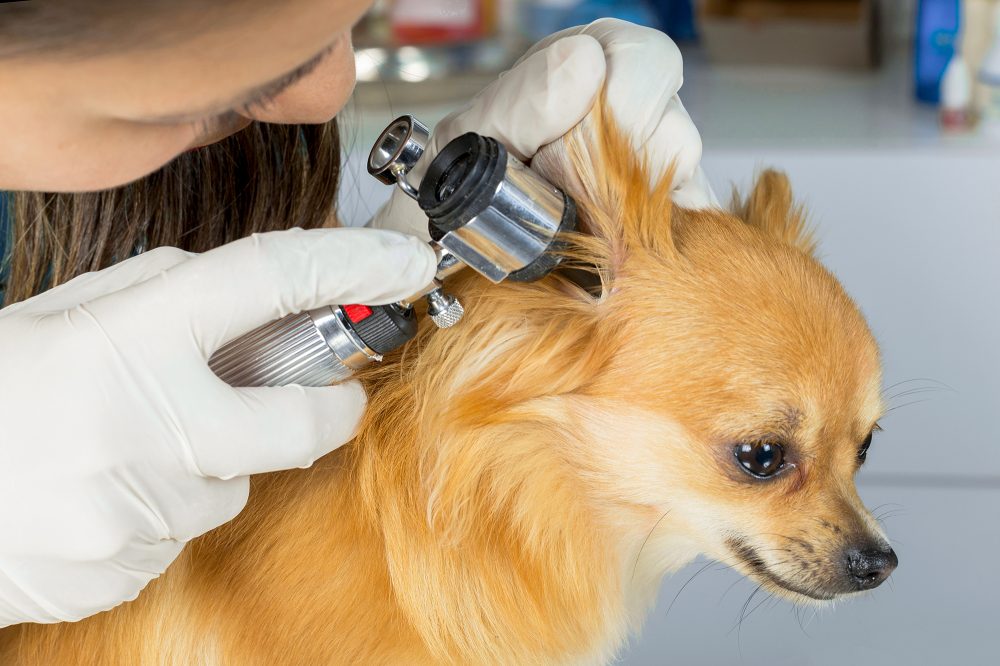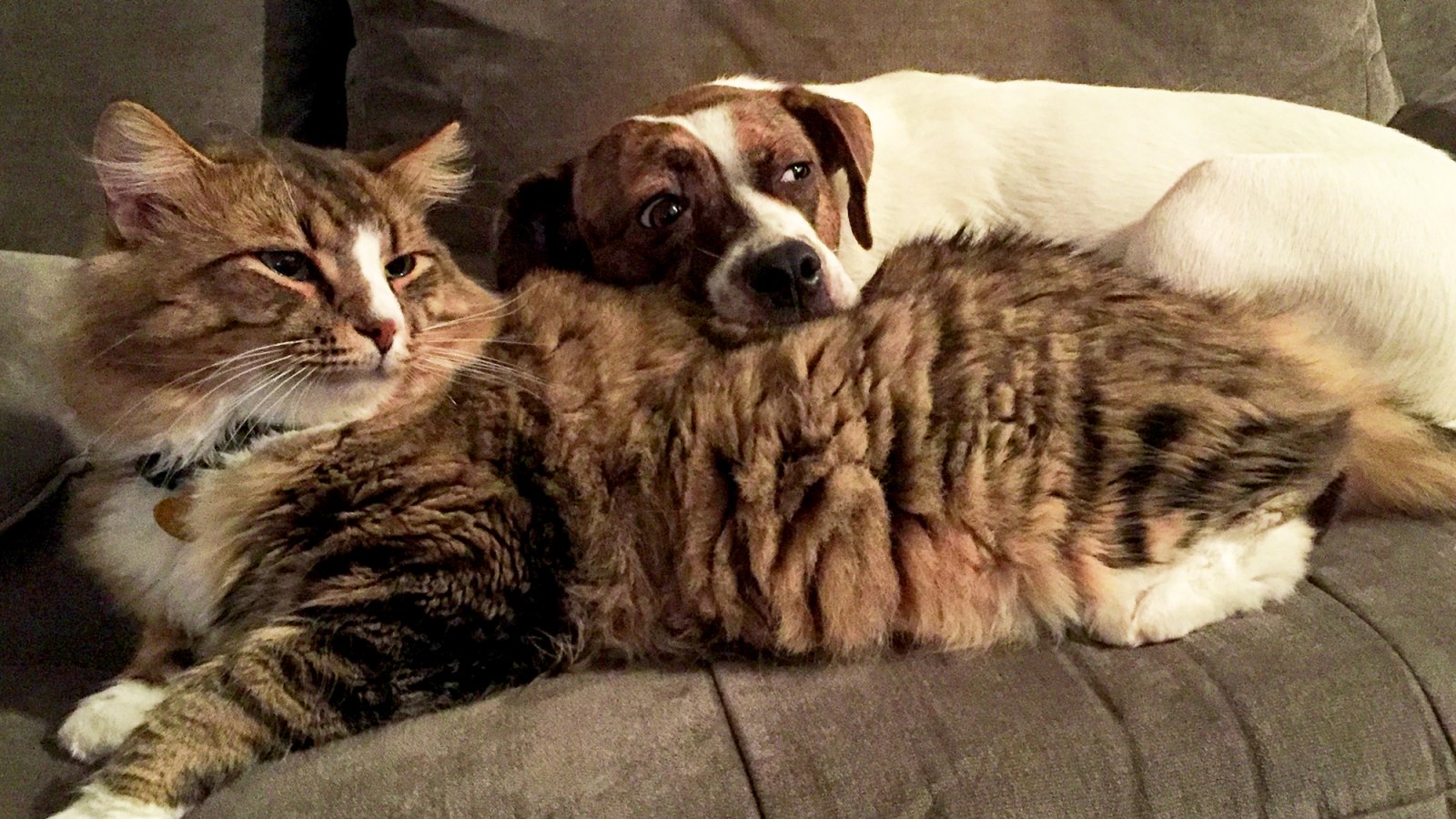Every winter, pharmacies, doctors offices, and even big box stores such as Target promote the flu shot like it’s a ticket to the Super Bowl, claiming it will ward off the season’s nastiest bug. This year, the virus wreaked serious havoc, causing millions of Americans to fall victim to sore throats, runny noses, sinus pressure, body aches, and upset stomachs.
But did you know your pet can suffer those same wretched symptoms, too? Both canine companions and our feline friends are susceptible to catching the highly contagious virus — but you don’t need to panic. Yet. Us Weekly spoke with New York veterinarians Amy Attas and Amanda Craig to learn more about dog and cat flus so you can better care for and protect your furry pals from the virus.
What Is It?
Just like humans, dogs and cats can catch the flu. The difference is that only certain strains affect them. For dogs, it’s H3N8 and H3N2; cats need to be careful of H7N2, according to the Centers for Disease Control. None of these bugs can be transferred across species, which means cats are safe from the dog flu and vice versa, and humans can’t catch any of these. Because they are fairly new strains of the virus, most pets don’t have any antibodies built up to protect them, Dr. Attas explained to Us. Instead, they develop respiratory infections that can range from mild to severe.
Worse yet, there’s no single season for canine and feline flu. “We often talk about the flu in winter months, but for dogs and cats, there is no seasonality to it,” Dr. Attas said. “We see cases year-round.” This is due to how highly contagious dog and cat flu can be, she explained. In fact, the American Veterinary Medical Foundation confirms that simply sniffing an infected animal, sneezing, and even barking can transmit the virus between furry friends.
If left untreated, both the canine flu and feline flu can be deadly. This is because the viruses can cause secondary bacterial infections such as pneumonia, according to Dr. Attas, who founded City Pets, a house-call practice for pets in Manhattan.
How to Spot It
If your dog or cat develops a cough or sneezes a lot, it’s time to see the veterinarian. Don’t wait for more symptoms to arise. “It can be hard to tell what you’re dealing with at the beginning,” Dr. Attas said. “Don’t be afraid to call your vet; they’ll be able to tell you how serious it is.”
Other signs your pet could be suffering from the flu are green-colored phlegm or nasal discharge, eye inflammation or conjunctivitis, congestion, decreased appetite, lip smacking and excessive salivation, lethargy, and general malaise, Dr. Attas explained. “Dogs and cats will feel just like we do: won’t want to get out of bed, will skip breakfast, just generally looking and feeling sick,” she said.
Essentially, this is where your pet parent intuition comes into play. “Your dog or cat can’t tell you he doesn’t feel well, but there are instinctual responses you can pick up on,” Dr. Attas said. “Most of the time, clients bring in their pets because they said,’He just isn’t acting right.’” Trust your gut and keep a watchful eye on your fur baby. If things don’t improve, you’ll need to get him tested for pneumonia or other infections.

How to Treat It
Unfortunately there’s no cure-all for the flu, and the virus simply needs to run its course. However, there is plenty of supportive care you can offer your pet. Dr. Attas recommends cleaning the discharge from their noses (this will help improve sense of smell and maintain appetite), giving them extra fluids or even electrolytes if they’re dehydrated, and administering antibiotics — but only if there is a secondary bacterial infection.
“Every pet’s immune system handles the virus differently,” Attas explained to Us. Watch your furry friend closely until you know he’s in the clear, which could be anywhere from a few days to a week or up to 10 days. You should also keep in touch with your vet.
According to Amanda Craig, a Glenville, New York, veterinarian who’s part of the New York State Veterinary Medical Society, the mortality rate for pet influenza is very low, at less than 10 percent. “Death typically only occurs in dogs and cats when there is the addition of secondary infections, or the animal’s immune system is already compromised — either from being very young, or very old, or having an underlying disease,” she explained. Dr. Craig strongly suggests you consult your vet immediately after the onset of any respiratory signs to rule out serious diseases and help kick the flu as quickly as possible.
How to Prevent It
While a small outbreak of dog flu earlier this year lead to widespread panic, it can be prevented via vaccine. That said, not all pets need one. Unfortunately, there is no feline flu vaccine just yet. Dr. Attas recommends only dogs who visit dog daycare centers, groomers, kennels, shelters, or other communal locales get an annual canine flu vaccine. Otherwise, you’d be vaccinating unnecessarily, which veterinarians do not recommend as it can cause issues for your pet later on.
What’s more, if you’ve recently adopted a new cat or dog and he shows signs of the flu, consult the shelter’s veterinary staff or call your own vet for a consultation and for tips on how to prevent it from spreading to other animals in the house. Your vet may suggest keeping your pets separate or completely quarantining the infected animal.


